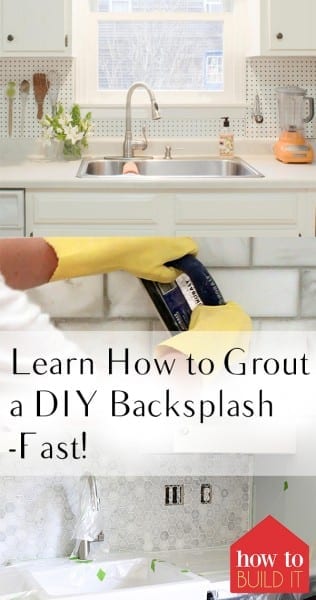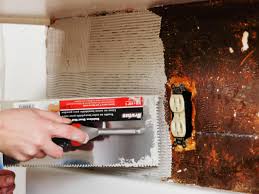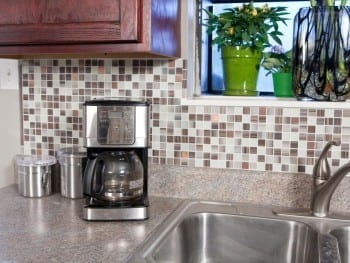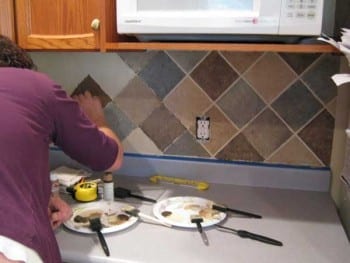

Once you’ve installed the tile for your DIY backsplash and the tile mastic has cured, it is time for grout! I’ve applied grout to both floors and a backsplash, and I can tell you right now, I’d much rather grout a backsplash. It’s easier and much more fun. Let’s take a look at just how quickly you can learn to grout your backsplash, then you’ll be on to your own project and have it done in no time!


Before you grout, you will want to cover everything in proximity to protect it from the grout. If you drop some grout somewhere and don’t see it right away, it’ll harden and be no fun to remove. So cover your counters, sink and faucets with plastic sheeting to save yourself time and trouble later. Note that grout will not be applied to the space between the tile and the countertop. Save that space for caulk.

Now take the time to clean your tiles. Just make sure that you have no stray bits of mastic on any of the tiles, because if you do it will be more noticeable after grout is applied. Also, make sure you have removed all tile spacers before applying grout.


A note about grout: use unsanded grout for natural stone tiles and sanded grout for ceramic and porcelain tiles. It is also recommended that you use sanded grout for wider joints, because it is stronger. In general, unsanded grout is great for the tiny joints in a stone backsplash application. You can use either pre-mixed or unmixed grout, depending on how much you want to spend, and your personal preference. Personally, I prefer pre-mixed grout for its ease of use and uniform consistency when applying it.


Now we will assume that you have either mixed your grout according to the manufacturer’s directions, or you are using pre-mixed grout, and you are ready to apply it to your backsplash. Take a generous amount of grout and apply it to a trowel or grout float and apply it along the grout lines of your tiles. Press into those spaces to ensure you fill them with grout.Now hold the grout float at a 45 degree angle to the backsplash and make sweeping motions diagonally across the tiles to spread the grout into the grout lines. The grout should fill the lines and be even with the surface of the tiles. Then, use your grout float to pull off excess grout from the surface of the tiles, being careful not to pull grout from the grout lines. Note: grout dries more slowly than mastic, so you can take your time and do smaller areas before moving on.


As the grout in the lines starts to firm up, use wet sponges and plenty of fresh water to further remove excess grout from the tiles. Rinse the sponges frequently, and after you wipe with one side, flip to the clean side before making another pass.


Once the tiles dry, you will see a haze on your tile surface. Just use a dry cloth or a buffing pad from your local automotive store to remove it.After grouting is completed and dried, don’t forget to seal the space between the tiles and countertop with caulk.


Now enjoy your beautiful new backsplash!

